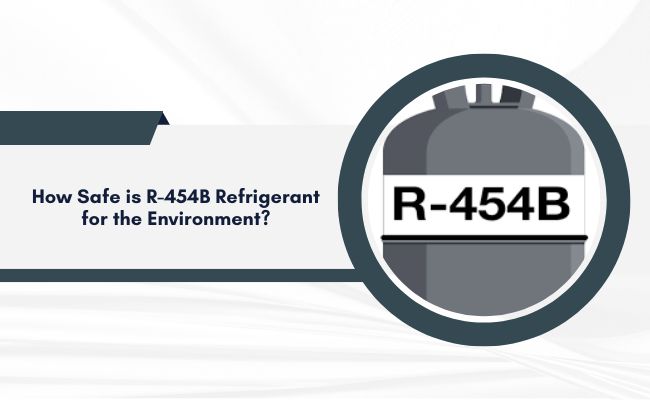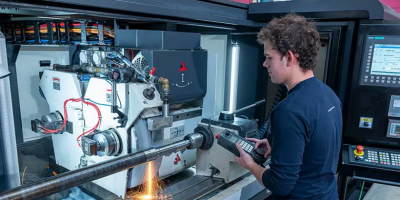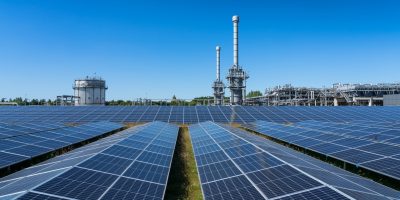Introduction
In the quest for more eco-friendly refrigerants that reduce global warming potential (GWP), researchers and manufacturers have developed R-454B, a promising alternative to traditional hydrofluorocarbons (HFCs) like R-410A. As concerns about the environmental impact of refrigerants grow, understanding the safety and potential of R-454B becomes crucial. This blog aims to explore the properties of R-454B Refrigerant, its impact on the environment, and how it compares to other options.
What is R-454B Refrigerant?
R-454B, also known by its brand name Opteon™ XL41, is a hydrofluoroolefin (HFO) refrigerant. It is part of the HFO family, which is renowned for its low GWP, making it an attractive substitute for high-GWP refrigerants like R-410A. HFOs are composed of hydrogen, fluorine, and carbon atoms, and they are designed to strike a balance between energy efficiency and environmental safety.
Environmental Impact of R-454B
One of the primary reasons for the development of R-454B was to address the environmental concerns associated with traditional HFCs. R-454B boasts an ultra-low GWP of around 466, a significant reduction compared to R-410A’s GWP of 2088. This remarkable decrease in GWP makes R-454B a potential candidate for mitigating greenhouse gas emissions and combatting global warming.
Additionally, R-454B exhibits excellent energy efficiency, which translates to reduced energy consumption in cooling systems. This efficiency improvement could lead to indirect environmental benefits by decreasing the overall carbon footprint associated with cooling processes.
Safety Considerations
Safety is a paramount concern when assessing any new refrigerant. R-454B’s safety profile is extensively evaluated, and it has been deemed non-toxic and non-flammable under normal operating conditions. However, like all refrigerants, they should be handled with care and by safety guidelines to prevent accidents or adverse effects on human health.
Comparing R-454B with Other Refrigerants
- R-410A vs. R-454B: R-410A has been widely used as a replacement for ozone-depleting refrigerants like R-22 in air conditioning systems. While R-410A is more environmentally friendly than R-22, its relatively high GWP remains a concern. R-454B presents a compelling alternative with its significantly lower GWP, making it a more sustainable choice for the future.
- R-32 vs. R-454B: R-32 is another low-GWP HFC that has gained popularity in some regions. However, R-454B surpasses R-32 in terms of energy efficiency and has a lower GWP, positioning it as a better alternative for reducing direct and indirect environmental impacts.
Regulatory Support and Industry Adoption
Several international agreements, such as the Kigali Amendment to the Montreal Protocol, aim to phase down the use of high-GWP Refrigerants and promote the adoption of environmentally friendly alternatives. R-454B aligns with these objectives and has received approval from various regulatory bodies, encouraging its use in the HVAC and refrigeration industries.
Moreover, leading HVAC manufacturers have already started incorporating R-454B into their equipment, making it more accessible to consumers looking to make greener choices.
Challenges and Limitations
While R-454B offers immense potential in terms of environmental safety, there are still some challenges and limitations to consider. One such concern is the possible formation of mildly flammable breakdown products in certain operating conditions. This makes it crucial to follow manufacturer guidelines and regulations to ensure safe use.
Additionally, retrofitting existing systems to accommodate R-454B can be more complex and costly compared to traditional HFC replacements. However, considering the long-term environmental benefits, the initial investment may be worthwhile for businesses and homeowners committed to sustainability.
R-454B’s Impact on Ozone Depletion
Apart from its low GWP, another critical aspect of R-454B’s safety for the environment is its negligible impact on ozone depletion. Unlike older refrigerants such as hydrochlorofluorocarbons (HCFCs) and hydrochlorofluorocarbons (HFCs), HFOs like R-454B do not contain chlorine atoms, which are known to contribute to the depletion of the ozone layer.
The ozone layer in the Earth’s stratosphere plays a crucial role in shielding us from harmful ultraviolet (UV) radiation. The depletion of this protective layer can lead to increased cases of skin cancer, cataracts, and other adverse effects on both humans and wildlife. By using R-454B and other HFO refrigerants, we can help preserve the ozone layer and mitigate the associated health and environmental risks.
Long-Term Viability and Market Adoption
For any refrigerant to make a significant impact on the environment, it must not only be safe but also commercially viable and widely adopted. R-454B has gained momentum in the market due to its favorable environmental characteristics, but its long-term viability remains a subject of discussion.
One key factor influencing the adoption of R-454B is the support and encouragement it receives from regulatory bodies and environmental agreements. As more countries commit to reducing HFC emissions under agreements like the Kigali Amendment, the demand for low-GWP alternatives like R-454B is likely to increase.
Conclusion
As concerns about climate change continue to grow, the HVAC and refrigeration industries are under increasing pressure to adopt environmentally friendly practices. R-454B refrigerant, with its ultra-low GWP and excellent energy efficiency, emerges as a promising solution to address these concerns.
Its safety, compatibility with existing systems, and approval from regulatory bodies make it an attractive option for reducing greenhouse gas emissions and mitigating global warming.
While challenges remain, ongoing research and innovation are expected to address these limitations, making R-454B an even safer and more viable alternative in the future. By transitioning to greener refrigerants like R-454B, we can take significant strides toward a more sustainable and environmentally conscious future for generations to come.














Comments